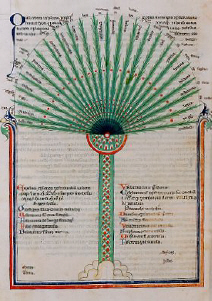8. For my part I am satisfied that anyone considering the mode in which Matter participates in the Ideas will be ready enough to accept this tenet of omnipresence in identity, no longer rejecting it as incredible or even difficult. This because it seems reasonable and imperative to dismiss any notion of the Ideas lying apart with Matter illumined from them as from somewhere above – a meaningless conception, for what have distance and separation to do here?
This participation cannot be thought of as elusive or very perplexing; on the contrary, it is obvious, accessible in many examples.
Note, however, that when we sometimes speak of the Ideas illuminating Matter this is not to suggest the mode in which material light pours down on a material object; we use the phrase in the sense only that, the material being image while the Ideas are archetypes, the two orders are distinguished somewhat in the manner of illuminant and illuminated. But it is time to be more exact.
We do not mean that the Idea, locally separate, shows itself in Matter like a reflection in water; the Matter touches the Idea at every point, though not in a physical contact, and, by dint of neighbourhood – nothing to keep them apart – is able to absorb thence all that lies within its capacity, the Idea itself not penetrating, not approaching, the Matter, but remaining self-locked.
We take it, then, that the Idea, say of Fire – for we had best deal with Matter as underlying the elements – is not in the Matter. The Ideal Fire, then, remaining apart, produces the form of fire throughout the entire enfired mass. Now let us suppose – and the same method will apply to all the so-called elements – that this Fire in its first material manifestation is a multiple mass. That single Fire is seen producing an image of itself in all the sensible fires; yet it is not spatially separate; it does not, then, produce that image in the manner of our visible light; for in that case all this sensible fire, supposing that it were a whole of parts (as the analogy would necessitate), must have generated spatial positions out of itself, since the Idea or Form remains in a non-spatial world; for a principle thus pluralized must first have departed from its own character in order to be present in that many and participate many times in the one same Form.
The Idea, impartible, gives nothing of itself to the Matter; its unbreaking unity, however, does not prevent it shaping that multiple by its own unity and being present to the entirety of the multiple, bringing it to pattern not by acting part upon part but by presence entire to the object entire. It would be absurd to introduce a multitude of Ideas of Fire, each several fire being shaped by a particular idea; the Ideas of fire would be infinite. Besides, how would these resultant fires be distinct, when fire is a continuous unity? and if we apply yet another fire to certain matter and produce a greater fire, then the same Idea must be allowed to have functioned in the same way in the new matter as in the old; obviously there is no other Idea.
